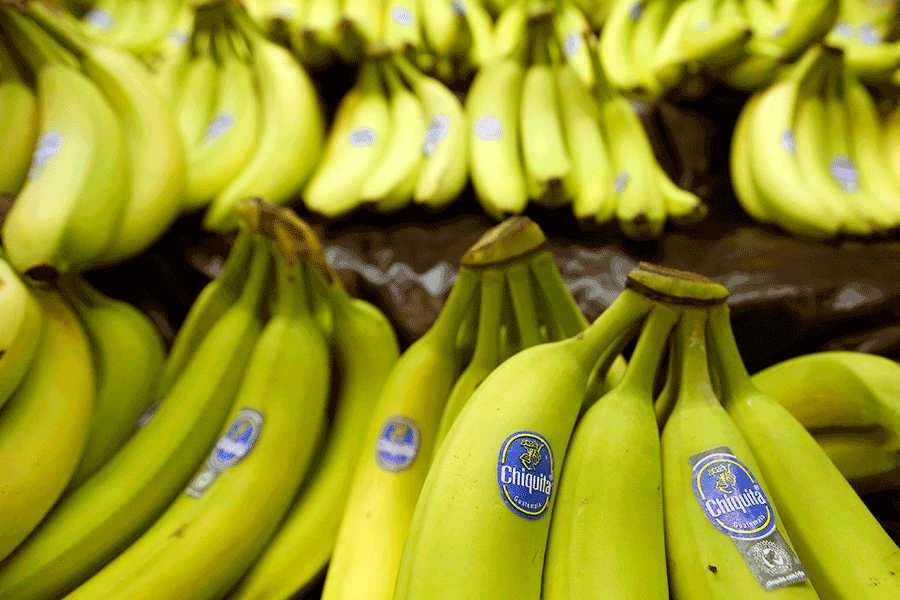Yes, we might have no bananas. Can science prevent the fruit's extinction?
Loading...
The Western world’s favorite banana is under serious threat unless more genetic diversity is introduced in the global crops, scientists say.
The seedless Cavendish banana that dominates fruit bowls in the West is produced at a rate of 100 million tons annually and grown in 130 tropical and subtropical countries across the world.
But now, scientists say, the fact that massive monocultural crops of the Cavendish are genetically identical has left them vulnerable to a new strain of fungus – Tropical Race 4 (TR4) – that has already wiped out crops across China and Southeast Asia and has also been found in Australia and Africa. They say the answer lies in breeding new types of bananas resistant to disease.
“While almost every other crop used for food production has been significantly improved through plant breeding over the last century, the banana industry has yet to benefit from genetics and plant breeding,” leading researchers on the subject said in an article on The Conversation.
Concerns about the destruction of global banana crops are not pie-the-sky. Until the 1960s, a banana called the Gros Michel or Big Mike dominated global markets, but those crops were destroyed by another fungal strain that forced the whole international banana market to restructure. More than 1,000 varieties of bananas have been identified in the wild, however, many of those are too acidic, full of seeds, or highly perishable – not characteristics that suit the demands of global markets.
If you visit a market in Latin America, you’ll find all sorts of strains of bananas varying in size and color, including red ones, some packed with seeds and all with varying levels of sweetness, NPR’s Dan Charles reported.
Thus far, Latin America has remained broadly free of the disease, but Randy Ploetz, a professor of plant pathology at the University of Florida who discovered Tropical Race 4 believes it may already be present in the region.
“This is an insidious disease in that it can move ... by soil-contaminated machinery, tools – that kind of thing,” Professor Ploetz told Quartz.
While more research is required, many scientists say the answer lies in discovering varieties of bananas, like those in Latin America, resistant to TR4 and then using classic methods of plant breeding or genetic engineering to blend them with other types with traits good for eating.
The common Cavendish is descended from a strain of bananas first grown in an English hothouse 180 years, according to the BBC. It is sterile and needs to be propagated by cloning but currently accounts for 47 percent of the world’s bananas and 99 percent of those sold commercially.








